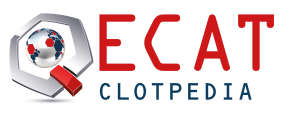Introduction:
External Quality Assurance (EQA) for Light Transmission Aggregometry (LTA) is challenging. To investigate the feasibility of EQA for LTA we had performed a pilot survey in 2024.
Materials and Methods:
In this pilot survey three different samples were distributed (one normal sample, one sample with 15 µg/mL Abciximab (ReoPro) and one sample 20 nM nanobody GPIb clone 17 mimicking the Bernard Soulier Syndrome) to which laboratories had to add locally prepared platelet-rich-plasma (PRP). The participants were asked to perform LTA testing with the agonists in use in their laboratory. However they were asked to use at least the following agonsits: The following agonist were recommended to test: Ristocetin (1.2 mg/mL and 2.0 mg/mL), Collagen (2 µg/mL and 5 µg/mL), ADP (2 µM and 5 µM), Arachidonic Acid (1 mM). If sufficient PRP was available, participants were asked to test also the thrombin receptor agonist peptide (TRAP) SFFLRN (10 µM). Participants were allowed to use other concentrations of the agonists as well. For each of the agonist the maximum aggregation (%) had to be reported.
Results:
Eighty-seven laboratories took part in this pilot survey, of which 66 laboratories submitted results.
The sample containing Abciximab (24.LTA1) behaves like expected in the light-transmission aggregometry assay. The concentration of nanobody GPIb clone 17 in sample 24.LTA3 was, unfortunately, too low to demonstrate the effect of a Bernard Soulier Syndrome.
Despite the fact that all participants have used their own local donor to prepare platelet-rich plasma, the observed between-laboratory variation for the recommended agonists in samples with a normal maximum aggregation is relatively low (9.9 – 26.3%) for a complex and non-standardized assay like the LTA. The high between-laboratory variation in sample containing Abciximab for most of the agonists is a consequence of the low maximum aggregation. The observed median within-laboratory variation is relatively low (2.1 – 3.2%).
Conclusion:
This pilot survey had demonstrated that EQA for LTA is feasible.
